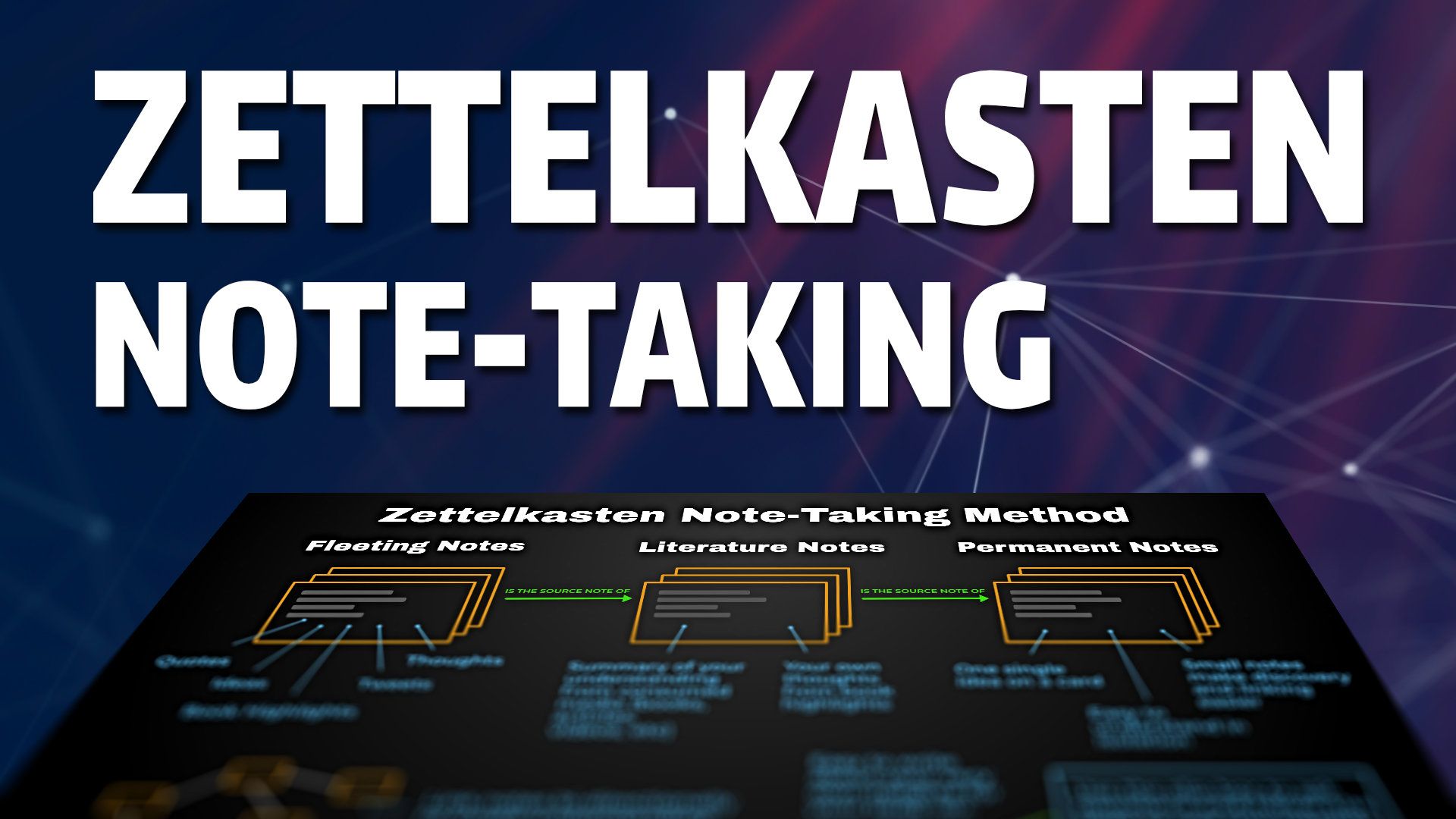Understanding the zettelkasten note-taking method

In this blog post, we'll discuss the Zettelkasten method, a powerful note-taking approach that can help you gain insights and create content from your acquired knowledge. Created by German sociologist Niklas Luhmann, this method is designed to make the most out of the information you encounter daily, making it accessible for future projects, such as blog posts or YouTube videos.
What is Zettelkasten and Smart Notes?
The Zettelkasten method, also known as the "Smart Notes" concept, refers to a system of note-taking divided into three types of notes: fleeting, literature, and permanent notes. This method aims to capture, process, and organise the information you encounter daily into a coherent knowledge base.
Note Types:
- Fleeting notes: These are temporary notes capturing your thoughts, ideas, or highlights from different sources (books, tweets, articles, etc.). They are called "fleeting" because they don't last long; you'll soon process them into literature or permanent notes.
- Literature notes: These are summaries of your understanding of a particular topic or source material, typically written in your own words. They can be derived from books, articles, videos, podcasts, or your own thoughts sparked by a source.
- Permanent notes: These are single ideas on one note, written so that they are easy to understand in isolation. Each permanent note should be concise and well-structured so that it remains comprehensible even many years later.
Linking Notes
The Zettelkasten method emphasizes linking notes together bi-directionally, creating connections between various ideas. By discovering and linking related notes, you can combine different concepts to create new insights.
Example of Insights from Linked Notes
Suppose you have a note about the brain's stress triggers and another about imposter syndrome. By linking these two notes, you might discover that imposter syndrome could be caused by environmental triggers that cause the brain to consult stored memories of anxious feelings, resulting in feelings of insecurity and anxiety associated with imposter syndrome. This insight can then form the basis for a new piece of content, such as a blog post or YouTube video.
Using Notes to Create Content
- Capture fleeting notes from various sources.
- Process these fleeting notes into literature notes, summarising your understanding in your own words.
- Organize your literature notes into permanent notes, linking related concepts together.
- Discover insights from the connections between notes.
- Use these insights to create content, such as blog posts or YouTube videos.
Conclusion
The Zettelkasten method can help you build a rich and interconnected knowledge base, which can be utilised to create insightful and original content. By capturing, processing, and linking notes in a thoughtful manner, you'll develop a deeper understanding and find new ideas to share with your audience.
If you liked this post and want to learn how to improve your own ability to recall the insights and stories from what you read, then consider checking out my book Atomic Note-Taking.


